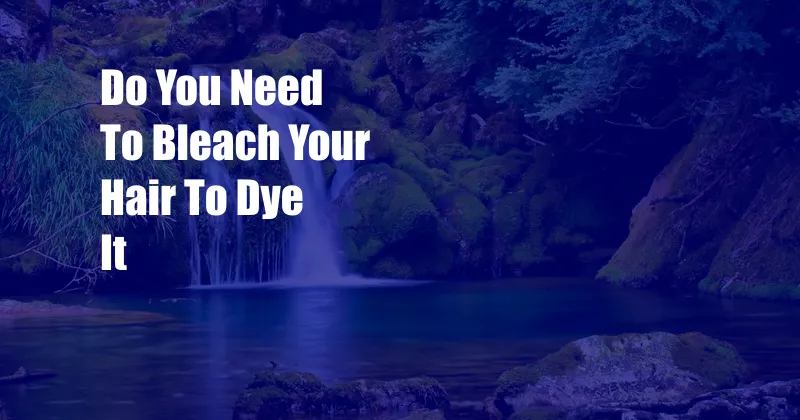
Do You Need to Bleach Your Hair to Dye It?
The thought of transforming your hair color can be both exciting and nerve-racking. Especially if you’re considering a dramatic change, like going from brunette to blonde. You may have heard that you need to bleach your hair before dyeing it, but is this always the case? Let’s explore the world of hair dyeing and bleaching to find out.
What is Bleaching?
Bleaching is a chemical process that involves using a lightening agent to strip away the natural pigment, melanin, from your hair. This results in a lighter base color that can then be dyed to achieve the desired shade. However, bleaching can be harsh on the hair, potentially causing damage such as dryness, breakage, or even chemical burns if not done correctly.
When is Bleaching Necessary?
Generally, bleaching is necessary when you want to drastically lighten your hair color, especially if it’s naturally dark. For instance, if you’re going from black to blonde, bleaching is essential to remove the dark pigment before applying the new color. Bleaching is also sometimes required for hair that has been previously colored, as the existing color can interfere with the new dye’s ability to take.
Can You Dye Hair Without Bleaching?
In some cases, it’s possible to dye hair without bleaching. If you’re looking for a subtle change or want to add a few highlights, a semi-permanent dye that does not require bleaching may suffice. Semi-permanent dyes simply coat the hair shaft and gradually fade over time. However, keep in mind that they may not cover gray hairs completely or work on very dark hair.
Tips and Expert Advice for Dyeing Hair
Tips for Dyeing Without Bleaching:
- Choose a dye that is slightly lighter than your natural hair color to enhance the natural highlights.
- Use a demi-permanent dye that will fade gradually, allowing you to adjust the color if needed.
- Apply the dye to damp hair to help evenly distribute the color.
Expert Advice for Bleaching Hair:
- Consult a professional stylist to determine the appropriate bleaching agent and technique for your hair type.
- Use a deep conditioner before and after bleaching to minimize damage.
- Apply a toner or color corrector to neutralize any unwanted brassy or yellow tones after bleaching.
- Avoid over-bleaching your hair, as this can lead to breakage.
FAQ on Bleaching and Dyeing Hair
Q: Can I bleach my hair at home?
A: While it’s possible, it’s highly recommended to seek professional assistance to avoid potential damage.
Q: How long does it take to bleach hair?
A: The time depends on the strength of the bleaching agent, your hair’s texture, and the desired level of lightness.
Q: Can I dye over bleached hair?
A: Yes, but it’s crucial to use a demi-permanent or permanent dye to ensure the color adheres to the bleached hair.
Conclusion
Bleaching before dyeing is not always necessary, but it’s crucial to understand when it’s required and the potential risks involved. If you’re considering a significant hair transformation, consult a professional stylist for personalized advice and guidance. By following proper techniques and precautions, you can achieve the desired hair color while minimizing damage.
Would you like to learn more about the exciting world of hair dyeing and bleaching? Let us know your questions or share your experiences in the comments below!